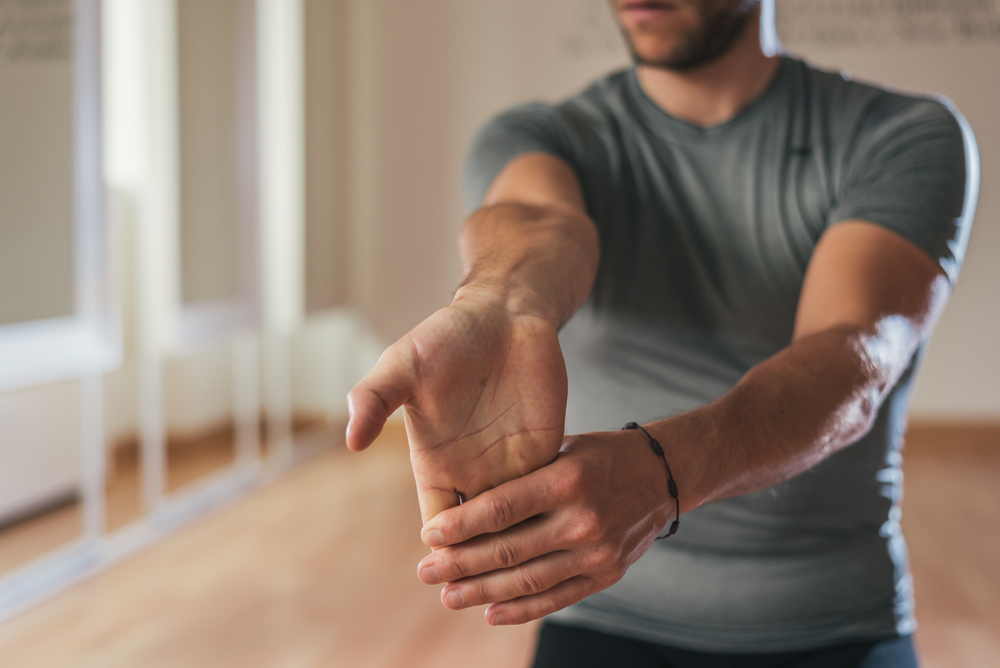Arm Exercises May Enhance Blood Circulation in Scleroderma Patients, Study Suggests

High-intensity exercise of the arms, or arm cranking, may improve blood circulation in scleroderma patients by increasing the dilation of blood vessels (vasodilation) and the amount of oxygen consumed in the muscles, according to researchers.
Cycling, an exercise for the legs, also increases muscles’ oxygen consumption, but was not as good as arm cranking at improving vasodilation.
Results of the study were published in the journal Arthritis Research & Therapy, in an article titled “The effects of upper and lower limb exercise on the microvascular reactivity in limited cutaneous systemic sclerosis patients.”
The study was sponsored by Sheffield Hallam University in the U.K. in collaboration with the Sheffield Teaching Hospitals NHS Foundation Trust.
Scleroderma is associated with abnormalities in blood vessels (the vascular system), including the formation of thickened vascular tissue, a process called fibrosis.
It is estimated that more than 90 percent of scleroderma patients experience Raynaud’s phenomenon, a condition that leads to arterial spasms and reduced blood flow, causing fingers and toes to feel cold or numb.
Medical treatment is used as the first-line therapy for uncontrolled Raynaud’s phenomenon attacks. But these therapies can raise both short-term side effects (headaches, edema, heart palpitations) and long-term effects, such as increased cardiovascular risk.
High-intensity exercise may represent an alternative therapy to medical treatment. Aerobic exercise in general and high-intensity interval training (HIIT) specifically are known to improve the function of blood vessels in different disorders.
Now, researchers studied the effect of HIIT on the circulation of patients with scleroderma.
The study (NCT03058887) compared the effects of two types of exercises — cycling and arm cranking — on blood circulation in the digital area of scleroderma patients.
Thirty-four patients with limited cutaneous scleroderma were divided into three groups: cycling, arm cranking, and a control group that did do the exercises. The exercise groups (cycling and arm cranking) underwent a 12-week exercise program, conducted twice a week. Data collected at the end of the 12-week program was compared to data before they started the program.
Results showed that intensive exercise resulted in improved blood circulation in scleroderma patients. Improvements in vasodilation were greater in the arm-cranking group.
Peak oxygen consumption increased in both exercise groups. Transcutaneous oxygen tension (a noninvasive method to measure oxygen levels in tissue) increased only in the arm-cranking group, although this increase was not statistically significant.
Both types of exercise improved life satisfaction and reduced the pain and discomfort from Raynaud’s phenomenon. Patients tended to prefer the arm cranking exercise to cycling.
Importantly, researchers saw no changes in body composition or in functional ability in both exercise groups.
Based on the results, the team suggested that arm cranking has the potential to improve vascular function in scleroderma patients.
“This is the first study to demonstrate that upper-limb aerobic exercise may be able to improve microvascular endothelial-dependent function in the digital area in patients with scleroderma experiencing Raynaud’s phenomenon,” the researchers wrote.
“Future research should focus on exploring the feasibility of a combined exercise such as aerobic and resistance training by assessing individuals’ experience and the quality of life in scleroderma patients,” they added.






